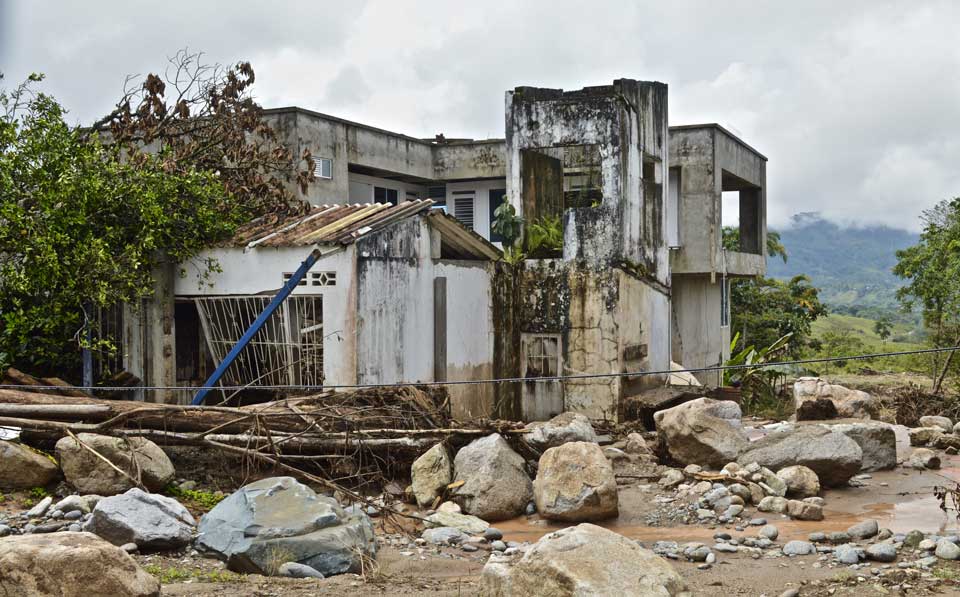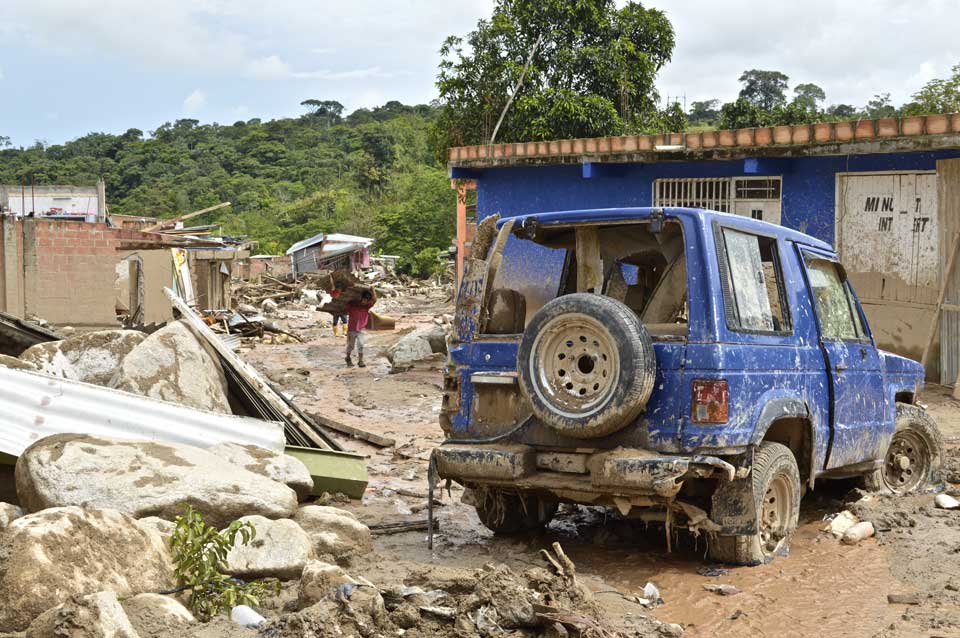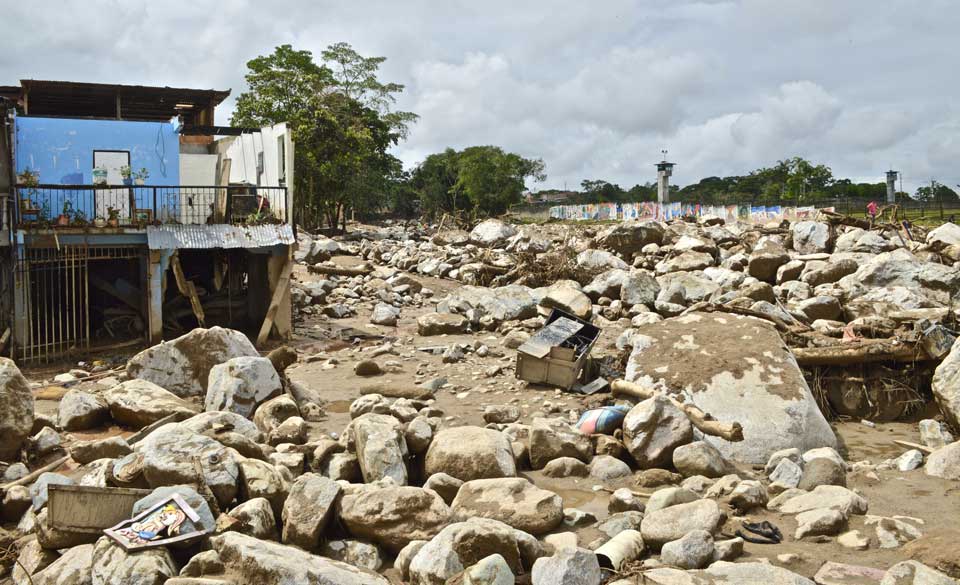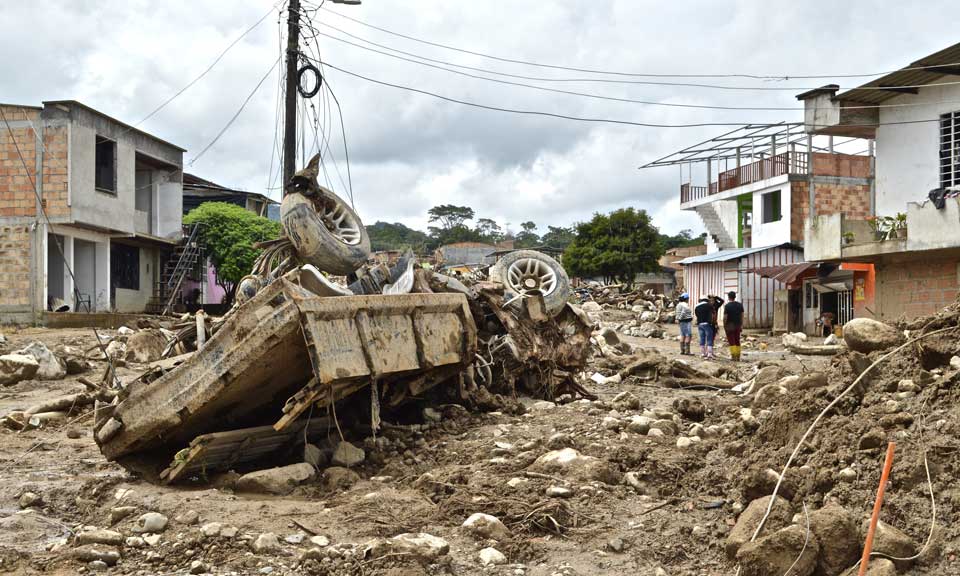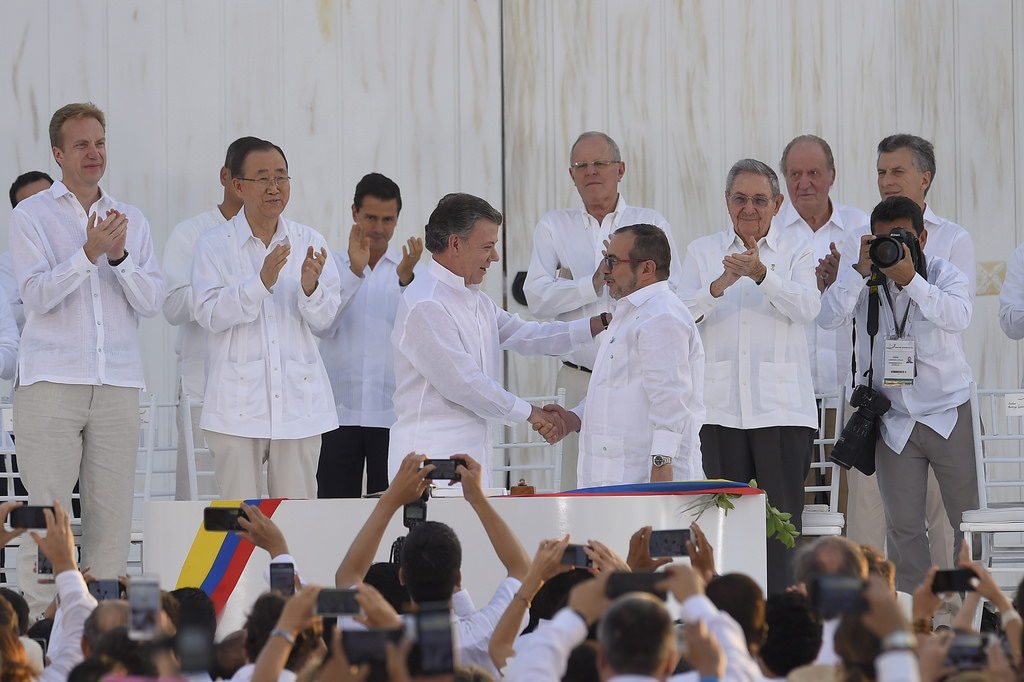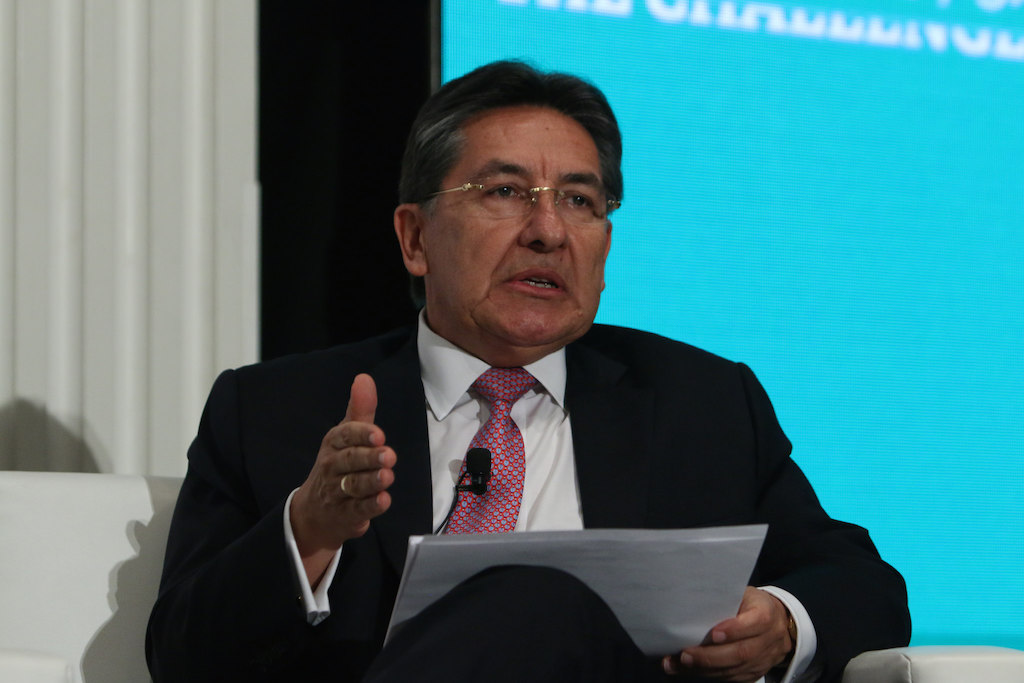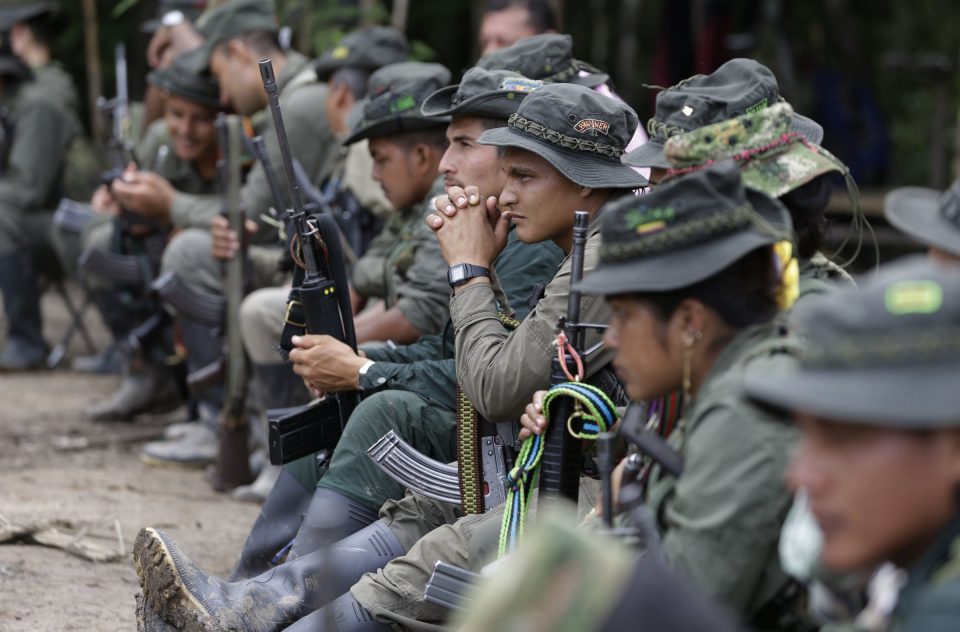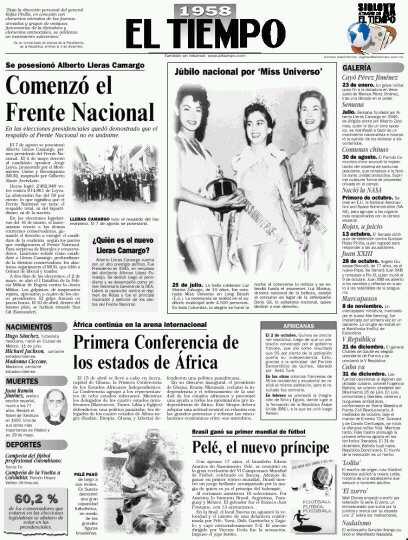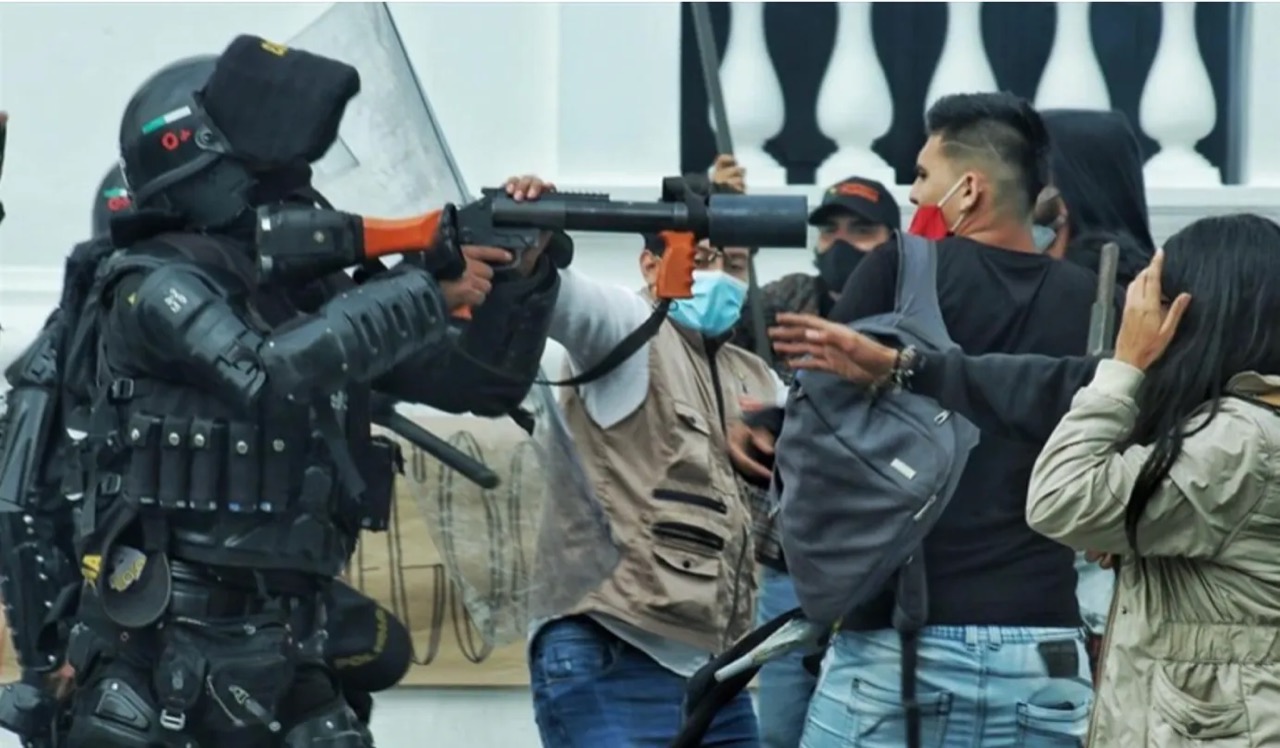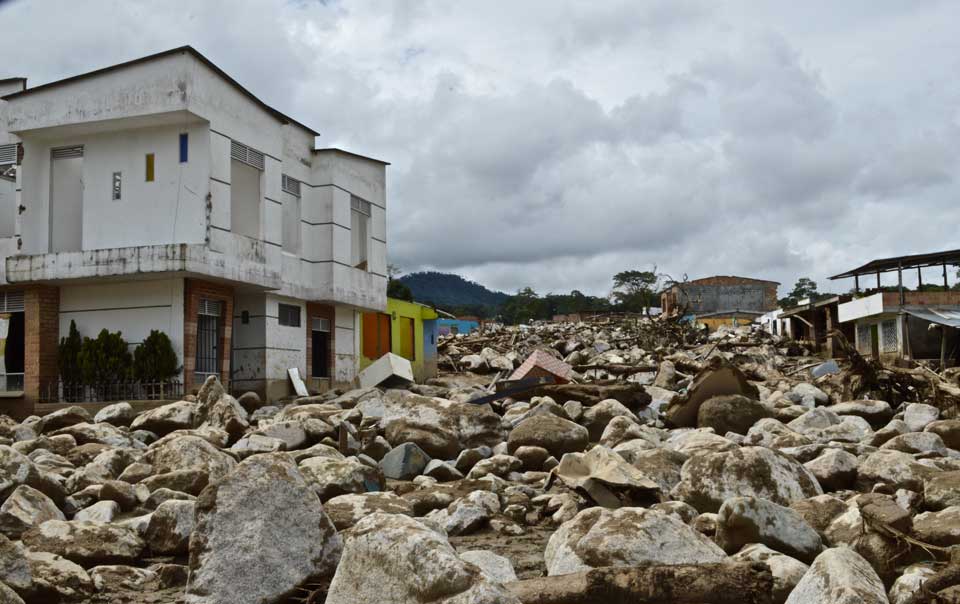
The disaster in Mocoa shows the vulnerability of certain areas of Colombia to future similar events.
The disaster that cost hundreds of lives in Mocoa was far from an isolated event. Gerald Barr looks at the tragic history of landslides in Colombia and what isn’t being done to prevent them in the future.
Politicos and pundits were quick to jump on the blame bandwagon following the deadly mud and rock-slide that engulfed the southern town of Mocoa last March leaving 328 dead or missing.
“FARC dynamite triggered the avalanche,” a senator from the right-leaning Centro Democratico party claimed – erroneously – as soon as the first news broke. The BBC in London was also quick to link the FARC to the tragedy, stating that the Mocoa victims were rural folk from Putumayo resettled on the urban flood plain after fleeing guerrilla violence.
Meanwhile, New Scientist magazine found a way to connect Colombians buried in mud to cocaine: “Neglect and drug trade lead to Colombian landslide disaster” it trumpeted, quoting a handful of old scientific papers that link deforestation to coca crops, of which Putumayo has plenty, along with illegal gold mining and uncontrolled cattle farming.
President Santos arrived on the scene, dodged the thorny questions and blamed climate change. Warming oceans had fed the massive rainstorm that triggered the landslide, went the theory. The world’s ‘rich countries’ are making poor countries ‘more vulnerable’ he said (perhaps forgetting the inconvenient truth that Colombia exports 88 million tonnes of coal a year).
And for some God-fearing Colombians it was simply divine punishment, as one pastor said of Mocoa in his popular blog (presumably he was quoting the Almighty): “The disaster is brought down by Me and of course orchestrated by Me. If you cannot work for good in My presence, then you will not escape suffering.”
The story, by Colombian journalist Jorge Kuaran, laid out in explicit detail how urban settlements in Mocoa were right in the firing line of landslides from the steep La Taruca river – the same one to burst out onto Mocoa three years later.
Whatever factors were the root causes of the disaster in Mocoa, from the divine to the ridiculous, one fact underpinning the tragedy is that Colombia is one of the most landslide-prone places on the planet thanks to “mountainous terrain, active tectonics, occasional earthquakes, deep weathering and intense rainfall,” according to disaster expert Professor Dave Petley on the American Geophysical Union landslide blog. “Add to this a vulnerable population and rapid expansion of infrastructure, and the results are inevitably that losses from landslides are high.”
Whereas flooding affects low-lying areas – and Colombia has plenty of those too – landslides are usually a product of steep slopes where water torrents carry soil, trees and rocks. This avalanche of debris is usually caused by heavy rain but can also be triggered by earthquakes and volcanoes.
The cataclysmic events triggered in this way have their roots deep in the earth’s mantle, far from human meddling, so they cannot easily be prevented. Our only hope, then, is to mitigate their impact with early-warning systems and sound town planning. Engineers and scientists can, to some degree, work through “what if” scenarios and warn where not to build houses.
More localised landslides triggered by rainfall can be linked to human activity. Deforestation, mining, quarrying, road construction and dam-building can change natural watercourses and weaken the soil and rock structures of a mountainside. And of course an extra helping of rainfall, perhaps linked to human-induced climate change, can start the avalanche.
But added to this is what experts call ‘human vulnerability’. An avalanche in empty mountains is an interesting quirk of nature. A rock-fall on a remote road is an inconvenience. But put people in the way, and it’s a disaster. And who lives in the danger zone? Usually the poor and marginalised, usually on the outskirts of towns and cities.
- Photos of the aftermath in Mocoa kindly provided by Ferney Martínez
And of course Latin America has all of the above in abundance and a death toll to match. According to one regional study over the ten years to 2014, more than 11,000 people were killed in 611 landslides.
But even within Latin America, Colombia stands out. According to Professor Petley, historical data shows that on average around 100 Colombians die each year in about 100 notable events, with no sign of the trend going down. Landslides account for nearly 50% of disaster deaths, with flooding second at 42% and earthquakes a mere 9%.
So far, 2017 has been an above-average year with landslides in Mocoa and Manizales claiming over 360 souls. Colombia is a “priority country” for landslide prevention, says Professor Petley. He also notes that western Colombia has high levels of seismic hazard and “a large earthquake in this area would probably cause land-sliding on a very large scale.”
Something on the scale of Armero, perhaps? Armero was a town wiped out by mudflows in 1985 after the nearby volcano Mount Ruiz erupted – melting the ice cap on its summit. The resulting torrent of volcanic debris – technically known as a lahar – flowed over 100 kilometres in four hours to bury 25,000 people. It still stands as the third worst landslide in human history (the other two were in Venezuela and China) and the fourth worst volcanic event, and dwarfs other Colombian disasters in terms of lives lost.
It also overshadows the fact that over time what kills many Colombians are not these major geological events like Armero, but rather the small rain-triggered slides. The river valley that funnelled the debris which wiped out at least 300 lives in Mocoa in March is only 10 kilometres long. Other localised landslides with high fatalities occurred in Medellín in 1987 with over 500 deaths, and Páez river in 1994 with an estimated 900 dead or missing.
To some degree these mid-scale disasters mask a constant trickle, year-in year-out, of minor landslides burying a family in their house at night, or a dozen people knocked off the road and entombed in their cars.
You might think that with so much at stake, Colombia as a country would be an expert in landslide prevention. And, according to some, it is. The country has both geological expertise (such as INGEOMINAS, the Colombian Geological Survey) and legislation to promote safer urban developments, says a 2006 report from the International Association for Engineering Geology and the Environment.
“The problems caused by landslides throughout Colombia are recognised and appreciated,” the report concludes. “The Colombian government… implements landslide monitoring, mitigation and stabilisation programmes. These include improved methods for mining subsidence prediction, better building control, improved engineering practice and communications. With landslide hazard mapping, risks and vulnerability maps are now available for major urban areas.”
Say what?! Then how does a disaster like Mocoa happen? Seemingly by city officials completely ignoring the expert advice on offer.
Kuaran was not the first to realise the danger, he had in fact been tipped off by staff at the city works department, perhaps venting frustration at being rebuffed by their superiors regarding the hazard.
In the aftermath of Mocoa, even as the townsfolk were re-burying their dead, reports emerged of warnings having been given many years back of just such a scenario. And not just ‘told-you-so’ mutterings with the benefit of hindsight, but uncannily detailed predictions of exactly what unfolded that fateful night at the end of March. These were not just technical reports buried in bureaucracy, but also reported widely in local media with headline titles.
“Quebrada La Taruca in Mocoa, a tragedy in the making of unimaginable proportions, which the authorities are ignoring,” announced Notifronteras, a local news outlet, in 2014. The story, by Colombian journalist Jorge Kuaran, laid out in explicit detail how urban settlements in Mocoa were right in the firing line of landslides from the steep La Taruca river – the same one to burst out onto Mocoa three years later.
Kuaran’s interest was piqued by visiting a smaller landslide in the La Taruca gorge which in 2014 buried the riverbed 11km upstream of Mocoa. The blockage forced the river underground for 250 metres, creating a ‘high level of instability’ in the surrounding soil, added to a huge quantity of loose rocks. He also realised that debris in the blocked part of the river was 1,100 metres higher than the town, giving it massive potential power if it ever got loose.
This huge boulder plug was sitting trapped in the gorge like the Sword of Damocles waiting to crash onto the town below. ‘This avalanche could reach Mocoa in less than 20 minutes, not giving time to organize any mass evacuation,’ he wrote.
Kuaran was not the first to realise the danger, he had in fact been tipped off by staff at the city works department, perhaps venting frustration at being rebuffed by their superiors regarding the hazard.
“I see non-existent emergency plans and no measures to overcome a catastrophe of considerable magnitude,” he wrote. The coming tragedy would not be by nature but rather a “lack of responsibility of the people who hold the authority in the municipality and the department.”
Not all Kuaran’s exhortations fell on deaf ears. In 2015 Corpoamazonía, the corporation in charge of the environment in the Amazon Region of Colombia made their own studies which validated the threat. Then workshops with the Colombian Geological Service flagged up deforestation in the zone and the imminent risk of a soil slip. But nothing got done.
“Our studies showed something like [the tragedy in] Mocoa could happen,” the chief of Corpoamazonía admitted to Semana magazine after the deadly landslide. He went on to blame the corporation’s stasis in Putumayo on the central government. The government has, since 2011, been making reforms to environmental management, but as yet failed to deliver.
Who ordered those reforms? President Santos. His blaming climate change sounds a bit hollow now, but may yet allow the government to slide out of their responsibility.
The fact remains that what happened in Mocoa was in every sense a tragedy foretold – and completely avoidable. The question is, will anything change?
By Gerald Barr

